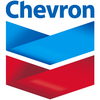Environmental Heroes Honored at 50th Annual ChevronTexaco Conservation Awards
Published 09-09-04
Submitted by Chevron Corporation: OLD DO NOT USE
"Ed Zern created the awards program to recognize those who were finding creative solutions to environmental challenges by bringing business and conservationists together," said Rhonda Zygocki, vice president of Health, Environment and Safety for ChevronTexaco. "Each of this year's winners underscores the power of such partnerships."
The winners, each selected by an independent panel of leading conservationists, were honored at ceremonies at ChevronTexaco's global headquarters in San Ramon, California. Each received a $10,000 cash prize. Since its founding in 1954, the ChevronTexaco Conservation Awards have honored more than 1,000 volunteers, professionals and organizations for their practical and creative solutions to environmental challenges.
- The 2004 ChevronTexaco Conservation Award honorees are:
- Dr. Harry Butler, conservationist, Willetton, Western Australia. Dr. Butler's 1970s television series, In the Wild, made many Australians aware for the first time of the country's wildlife heritage and the need to conserve it. He also is credited for helping to maintain the ecological integrity of significant areas throughout Australia; this includes his work with the oil and gas industry off the country's northwest coast. Dr. Butler's environmental management model has been widely adopted by government and industry in Australia and internationally. His efforts directly help protect thousands of plant and animal species.
- Dale Harris, the Great Burn Study Group, Missoula, Montana. For 30 years, Harris has worked both professionally and as a volunteer to protect wild places, including a 300,000-acre area known as the Great Burn, which borders Montana and Idaho. This area still bears the effects of a 1910 fire, the largest in recorded history, in which millions of acres of forest burned in just a few days. Harris co-founded the Great Burn Study Group, which has campaigned for U.S. Congress to designate the area as a national wilderness.
- Gulf Specimen Marine Laboratory (GSML), Panacea, Florida. The nonprofit GSML's unique research, educational, marine protection and a myriad of other programs provide a variety of benefits to scientific and medical research. Founded in 1963 by Jack and Anne Rudloe, GSML facilities house hundreds of species of local marine life used in educational and research programs in universities, aquariums and museums throughout the world. In 2003, a compound found in one Gulf of Mexico specimen that GSML provided to the National Cancer Institute received clinical approval for use as a treatment of esophageal cancer. GSML's animals have flown in the space shuttle in order to help NASA study weightlessness. Other species are used in pollution research. Each year, more 16,000 students visit GSML's 30,000-gallon aquarium to see, touch and learn about species of marine fish, sea turtles and invertebrates from the gulf. Also, since the 1970s, GSML has been active in protecting coastal wetlands, sea turtles, marine resources and public lands.
- LightHawk, Lander, Wyoming. With more than 120 pilots, the nonprofit LightHawk is the oldest and largest volunteer-based environmental aviation organization in the world, having sponsored thousands of flights in support of diverse environmental efforts throughout the Americas. Flights monitor manatee, whale shark and water bird populations. Aerial monitoring tracks logging from Alaska to Panama, conservation easements in New England and energy development in the Rockies. Urban flights help passengers envision healthy watersheds and gain perspective on groundwater management. LightHawk supports the work of more than 130 partners annually, which include community groups, large environmental networks and international organizations.
- Dr. Shirley McGreal, International Primate Protection League (IPPL), Summerville, South Carolina. McGreal founded IPPL in 1973 to fight the illegal capture, sale and transport of primates. Since then, she has built and coordinates an international network with 17,000 members, 31 field representatives and 26 advisers dedicated to protecting gorillas, orangutans, gibbons, monkeys and other primates. From Africa and Asia to the United States, McGreal works with and supports conservationists, grassroots animal-protection groups and primate rescue centers. At IPPL's headquarters outside Summerville, she operates a 10-acre sanctuary for primates. Her magazine, IPPL News, also plays an important role in educating readers in more than 50 countries about action that can be taken to protect primates.
- Dr. Terri Roth, Cincinnati Zoo Lindner Center for Conservation and Research of Endangered Wildlife, Cincinnati, Ohio. With the Sumatran rhinoceros on the brink of extinction, Roth's efforts led to the first of the species to be bred and born in captivity in 112 years. She discovered that female Sumatran rhinos ovulate only after mating, and thus determined when the rhinos could be paired for breeding without fighting. Solving this mystery resulted in successful captive-breeding protocol for Sumatran rhinos. Because of habitat destruction and poaching, fewer than 300 Sumatran rhinos remain globally, mainly in the forests of Malaysia and in Sumatra, the largest island of Indonesia. Roth's efforts to save the Sumatran rhino from extinction are a celebration of science, institutional collaboration and international partnerships.
"Ed had this idea about the awards at a time when conservation was a hard thing to talk about," said Helen Engle, longtime director on the National Audubon Society's board. "And he knew intuitively that nothing would be achieved unless we built partnerships."
Currently celebrating its 125th anniversary, ChevronTexaco is one of the world's leading energy companies. With more than 50,000 employees, ChevronTexaco conducts business in approximately 180 countries around the world, producing and transporting crude oil and natural gas, and marketing and distributing fuels and other energy products. ChevronTexaco is based in San Ramon, Calif. More information on ChevronTexaco is available at www.chevrontexaco.com

Chevron Corporation: OLD DO NOT USE
Chevron Corporation: OLD DO NOT USE
Chevron Corporation provides administrative, financial, management and technology support to U.S. and international subsidiaries that engage in the operation of petroleum, chemicals, mining, power generation and energy services.

